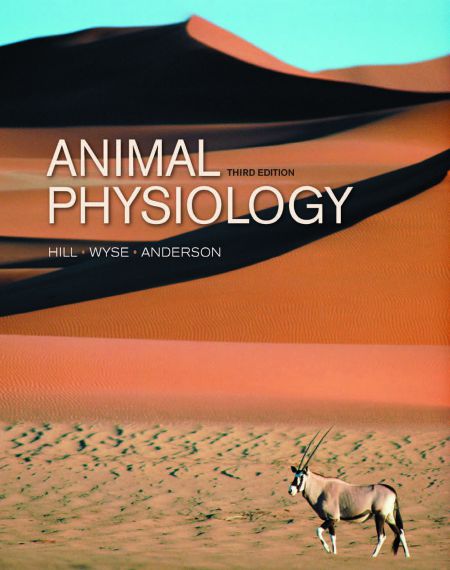Animal Physiology presents all the branches of modern animal physiology with a strong emphasis on integration of physiological knowledge, ecology, and evolutionary biology.
Animal Physiology, 3rd Edition

Thomas Kuhn wrote that a textbook is principally a means of communicating to students the paradigms of their time. We have had three principal goals in preparing the content of this book. One, in accord with Kuhn’s dictum, has been to articulate the central paradigms of contemporary animal physiology. A second content goal has been to provide our readers with a source of both lucid explanations of physiological concepts and accurate information about physiological systems. Our third content goal has been to draw attention to the cutting edges of physiological science, the places where the onward progress of research is challenging old paradigms and potentially creating footholds for new ones.
Integration extends from molecules to organ systems and from one physiological discipline to another. The book takes an entirely fresh approach to each topic. Its full-colour illustrations include many novel, visually effective features to help students learn. Each of the 25 main chapters starts with a brief animal example to engage student interest and demonstrate the value of the material that will be learned. The book includes five additional, briefer ‘At Work’ chapters that apply students’ newfound physiological knowledge to curiosity-provoking and important topics, including diving by marine mammals, the mechanisms of navigation, and muscle plasticity in use and disuse. The book is committed to a comparative approach throughout.
Whereas mammalian physiology is consistently treated in depth, emphasis is also given to the other vertebrate groups, arthropods, molluscs, and-as appropriate-additional invertebrates. Concepts and integrative themes are emphasized while giving students the specifics they need. The whole animal is the principal focus of this book. The pages are filled with information on everything from knockout mice, genomics, and enzyme chemistry to traditional organ physiology, phylogenetic analysis, and applications to human affairs.
Always, the central organizing principle for the array of topics presented is to understand whole animals in the environments where they live. Complex principles are developed clearly and carefully to help students understand important concepts in sufficient depth without being overwhelmed. Pedagogical aids include embedded summaries throughout chapters, study questions, partially annotated reference lists, an extensive glossary, appendices, and an upgraded index. For all three authors, teaching physiology to undergraduate students has been a lifelong priority. The opening five chapters provide background material on physiological basics, cell-molecular concepts, genomics, physiological development, transport of solutes and water, ecology, and evolutionary biology.
Password: pdflibrary.net
